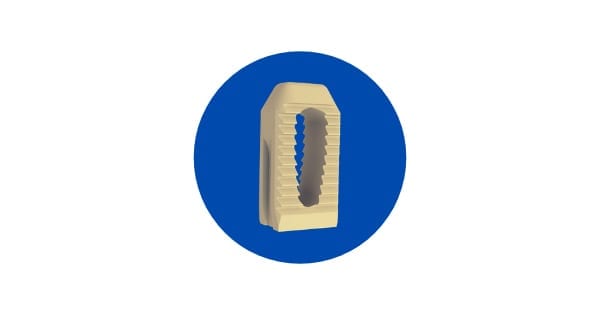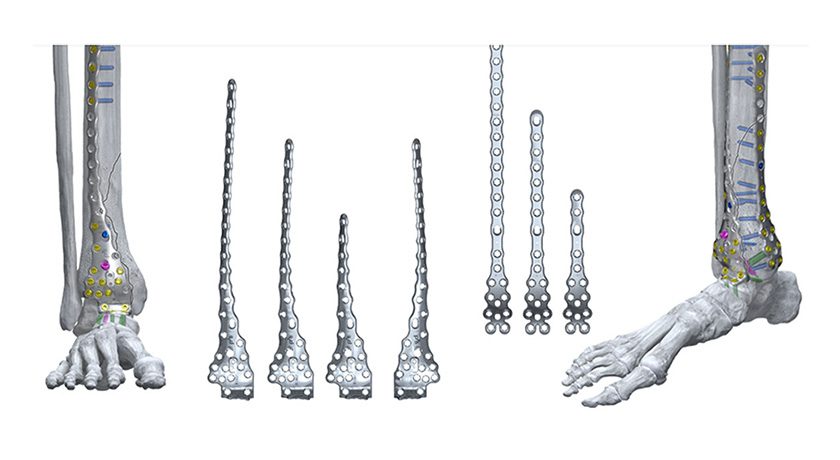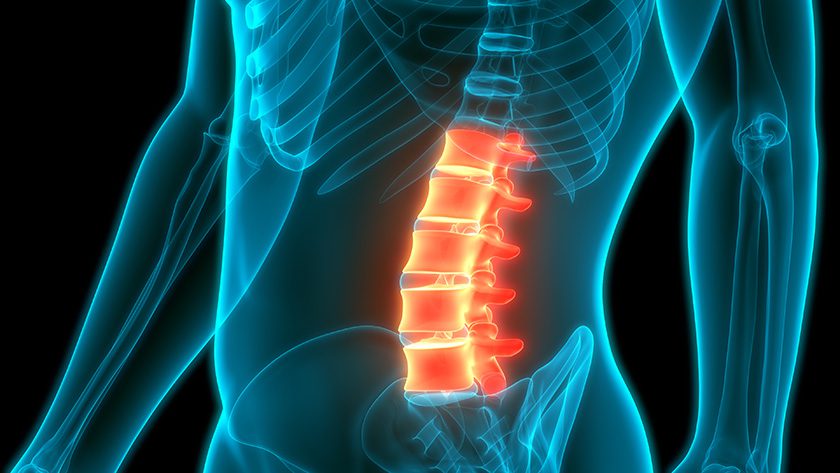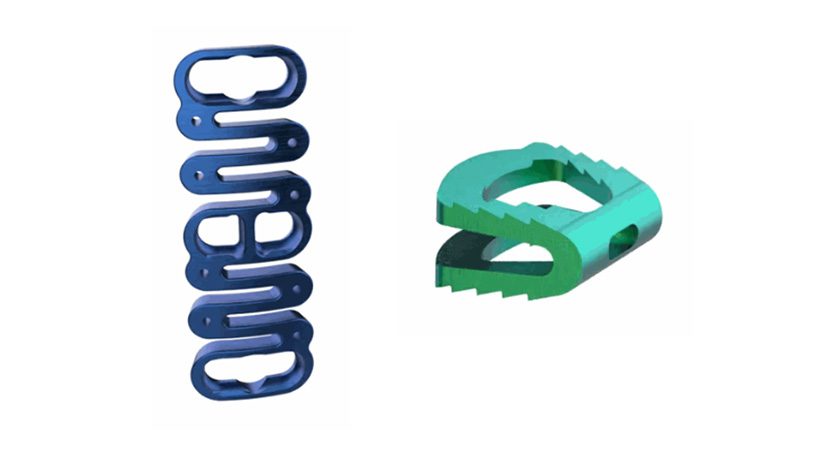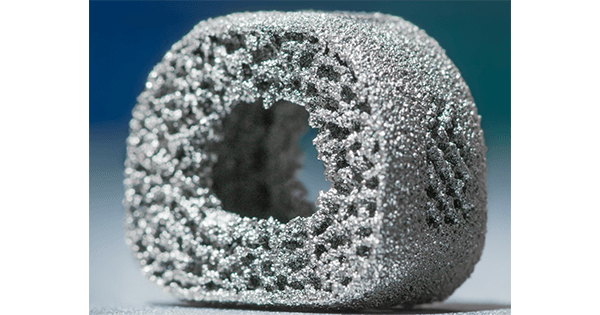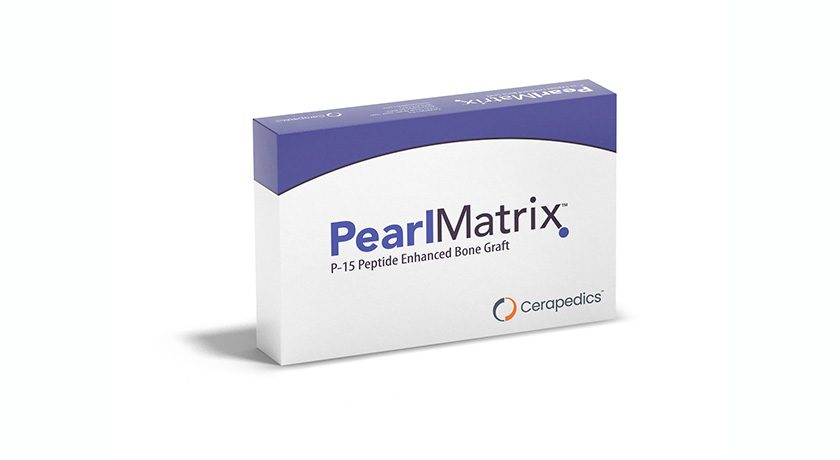

 Copy to clipboard
Copy to clipboard 
Cerapedics received FDA premarket approval of PearlMatrix P-15 Peptide Enhanced Bone Graft as a Class III drug/device combination product for use in single-level transforaminal lumbar interbody fusion (TLIF) in adult patients with degenerative disc disease. Powered by a proprietary P-15 Osteogenic Cell Binding Peptide, PearlMatrix Bone Graft is claimed to be the first and only bone growth accelerator proven to accelerate lumbar fusion.
TLIF is a complex surgical procedure aiming to reduce or eliminate pain in the lumbar spine because of degenerative disc disease by removing a damaged disc and then fusing the spinal vertebral bones above and below the damaged disc to create spinal stability along with decompression of the spine. The fusion is achieved using a bone graft which, over time, grows together with the vertebrae to form one bone.
FDA approval is supported by data from ASPIRE, a prospective, single-blinded, multi-center, randomized, controlled pivotal PMA IDE study, evaluating the safety and efficacy of PearlMatrix Bone Graft compared to use of local autologous bone graft and cancellous allograft when applied in TLIF surgery.
The ASPIRE trial included 33 U.S. centers and 293 patients, including approximately 60% of patients that were considered high risk for non-union. The study met the primary endpoint of 24-month Composite Clinical Success (CCS) and further demonstrated statistical superiority versus local autograft in CCS which was comprised of five components: fusion, function (ODI), neurological, no serious device-related adverse events and no index-level secondary surgical interventions. ASPIRE is the first study of its kind to show substantially higher fusion rates achieving statistically superior fusion speed at 24 months with more than twice as many patients fused at six months versus local autograft. Complete results of the ASPIRE study are expected to be published in the coming months.
“The FDA approval of PearlMatrix Bone Graft is a significant achievement for Cerapedics as we’re the only company with two PMA-approved products for use in spinal fusion. This is a testament to our dedication to investing in high-quality clinical evidence in our pursuit to have a positive impact on the practice of spine surgery and the lives of patients,” said Valeska Schroeder, Chief Executive Officer of Cerapedics. “Differentiated by its unique P-15 Osteogenic Cell Binding Peptide, PearlMatrix Bone Graft is the first and only bone growth accelerator proven to substantially increase lumbar fusion speed, giving surgeons a new option to better meet patient needs and treat them more efficiently.”
Source: Cerapedics
Cerapedics received FDA premarket approval of PearlMatrix P-15 Peptide Enhanced Bone Graft as a Class III drug/device combination product for use in single-level transforaminal lumbar interbody fusion (TLIF) in adult patients with degenerative disc disease. Powered by a proprietary P-15 Osteogenic Cell Binding Peptide, PearlMatrix Bone Graft is...
Cerapedics received FDA premarket approval of PearlMatrix P-15 Peptide Enhanced Bone Graft as a Class III drug/device combination product for use in single-level transforaminal lumbar interbody fusion (TLIF) in adult patients with degenerative disc disease. Powered by a proprietary P-15 Osteogenic Cell Binding Peptide, PearlMatrix Bone Graft is claimed to be the first and only bone growth accelerator proven to accelerate lumbar fusion.
TLIF is a complex surgical procedure aiming to reduce or eliminate pain in the lumbar spine because of degenerative disc disease by removing a damaged disc and then fusing the spinal vertebral bones above and below the damaged disc to create spinal stability along with decompression of the spine. The fusion is achieved using a bone graft which, over time, grows together with the vertebrae to form one bone.
FDA approval is supported by data from ASPIRE, a prospective, single-blinded, multi-center, randomized, controlled pivotal PMA IDE study, evaluating the safety and efficacy of PearlMatrix Bone Graft compared to use of local autologous bone graft and cancellous allograft when applied in TLIF surgery.
The ASPIRE trial included 33 U.S. centers and 293 patients, including approximately 60% of patients that were considered high risk for non-union. The study met the primary endpoint of 24-month Composite Clinical Success (CCS) and further demonstrated statistical superiority versus local autograft in CCS which was comprised of five components: fusion, function (ODI), neurological, no serious device-related adverse events and no index-level secondary surgical interventions. ASPIRE is the first study of its kind to show substantially higher fusion rates achieving statistically superior fusion speed at 24 months with more than twice as many patients fused at six months versus local autograft. Complete results of the ASPIRE study are expected to be published in the coming months.
“The FDA approval of PearlMatrix Bone Graft is a significant achievement for Cerapedics as we’re the only company with two PMA-approved products for use in spinal fusion. This is a testament to our dedication to investing in high-quality clinical evidence in our pursuit to have a positive impact on the practice of spine surgery and the lives of patients,” said Valeska Schroeder, Chief Executive Officer of Cerapedics. “Differentiated by its unique P-15 Osteogenic Cell Binding Peptide, PearlMatrix Bone Graft is the first and only bone growth accelerator proven to substantially increase lumbar fusion speed, giving surgeons a new option to better meet patient needs and treat them more efficiently.”
Source: Cerapedics

You are out of free articles for this month
Subscribe as a Guest for $0 and unlock a total of 5 articles per month.
You are out of five articles for this month
Subscribe as an Executive Member for access to unlimited articles, THE ORTHOPAEDIC INDUSTRY ANNUAL REPORT and more.
JV
Julie Vetalice is ORTHOWORLD's Editorial Assistant. She has covered the orthopedic industry for over 20 years, having joined the company in 1999.


